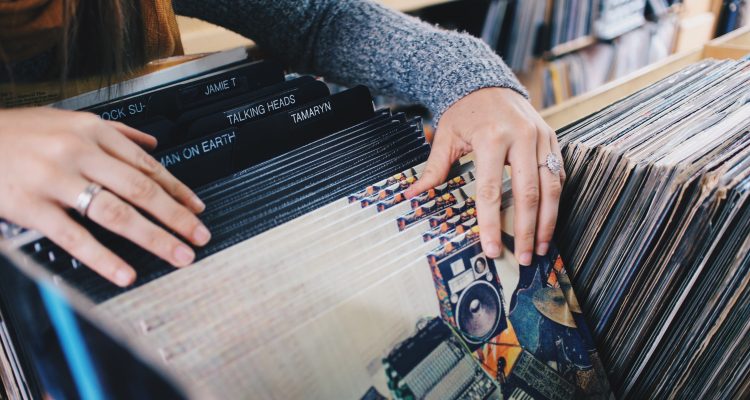As I sit by the crackling sounds emitted from my 1980s Panasonic Record Player, I can’t help but wonder exactly how this modern vinyl revival became a sort of neoteric “Beatlemania,” which is only further supported by the fact that over 12 million vinyl records were sold in 2015, according to Forbes. By the same token, music streaming has seemed to permeate all forms of music news, whether it be that Chance the Rapper won a Grammy for thaat first-ever, streaming-only record, according to MarketWatch, or that Prince’s catalogue has finally made it onto various streaming platforms. While the two mediums couldn’t be any different, they stress the importance of modernization in a once-dying landscape of musical technology.
For music consumers, CDs have now become the fish in a sea of sharks, helplessly outnumbered by the progression of what the consumer wants. According to an article published last year by Time Magazine, “Until recently, listeners paid a certain amount of money for a certain amount of music and owned it forever. But streaming services like Spotify have changed all that. Now listeners pay for access, forking over $10 a month to effectively rent millions of songs.” Music streaming platforms such as Spotify and Apple Music allow virtually anyone with an internet connection to have access to a vast catalogue of music at a small premium while attaining a better sound than what is compressed on a CD. Sure, CDs are accessible in their ability to be played in areas where you often find yourself listening to music. However, music streaming, primarily through your phone, allows you to essentially carry a library of music with you on the go. When was the last time you were in a car and someone asked you to pass the CD?
On the other side of the argument, you have the reemergence of records. Though records may be an older format (first conceived in 1887), pressing plants have now produced the technology to manufacture high fidelity records that are formatted on heavily-grammed wax, which produces an unparalleled pure sound. Many purists as myself acknowledge that music streaming is the most popular music format at the moment, with 68 million individuals globally owning some form of music streaming account, according to the International Federation of the Phonographic Industry. However, the feeling of physically owning an album is still an aspect that is missing from music streaming. The feeling of owning the cover artwork as well as the physicality of carrying music around is unparalleled. If someone asked me if I’d rather stream Ryan Adams’ “Heartbreaker,” or own the 180 gram record, I have a feeling I’d be running to Johnny’s to grab the record. This has led to the massive popularity of various “bargain bin” record shops as well as the deification of Record Store Day, which celebrates the sale of records at “mom-and-pop” shops around the nation.
Though new records seem to come out weekly, nothing fills an audiophile such as myself with more joy than walking into a secondhand store and shifting through a milk crate of big band and 70s folk music. New records, as pristine sonically as they may be, often are too expensive for a college student’s budget, but a couple 99 cent records shouldn’t break the bank. However, should you save up your money, as I often find myself doing, strapping down and buying a new record is worth the investment as you are able to witness the purity and evolution that music media has become testament to.
While these concepts might come across as hipster in nature, they reflect a society that is looking to find what is trendy while also appreciating the essence of what makes music both an auditory and physical pleasure. As we become more cognizant of exactly what we are given through music media, we are better able to discern that music is moving in a more modernized direction and there is no stopping it. It can be noted, however, that just because you have one form of media doesn’t mean you are mutually exclusive to it, as many people who listen to records also have streaming accounts and vice versa. Each format has its benefits and its drawbacks, though it isn’t stopping people from popularizing each format as of late. I dare everyone to “surrender to the flow” of music technology and branch out and explore new forms of music.
To put it into perspective, even though it may come off as impossible to throw away that CD of Fleetwood Mac’s “Rumours” that your dad gave you as a kid, know that some record executive somewhere has pressed a superior copy for you to keep the cog of the music industry turning by investing in a “hip” format. Better yet, you can even listen to it on Spotify. No matter what form of media you choose, technology is an inescapable permeator of our society and sure enough, given a few years, music streaming and records will be outdated by a new form of online media and cassette tapes. So while you’re at it, don’t be afraid to drop $30 on that “Rumours” record and enjoy how far music technology has progressed.


Leave a Reply